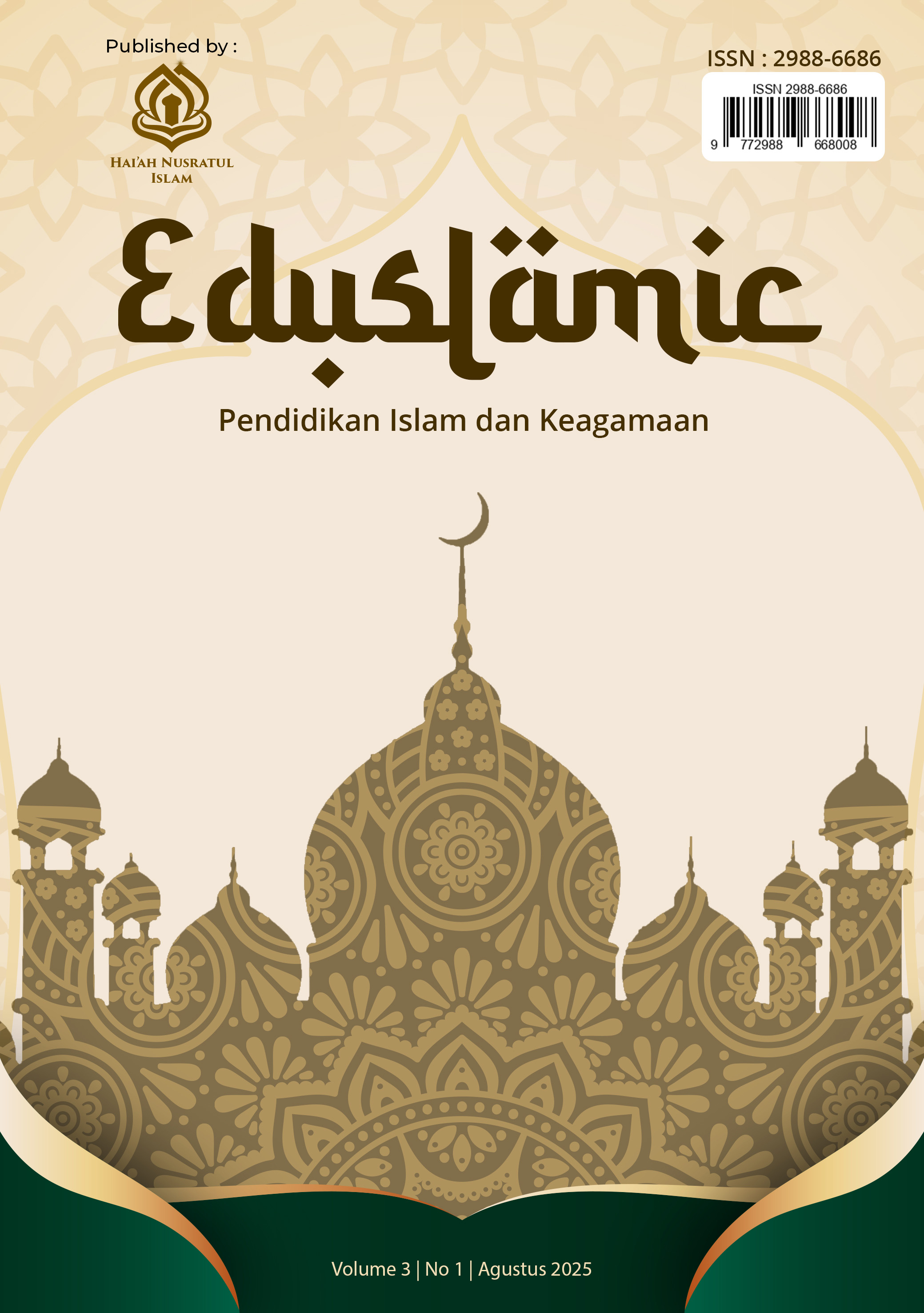ROFA' ALIF SIGN AS A SYMBOL OF POLICY AND FIRMNESS IN LEADERSHIP
DOI:
https://doi.org/10.59548/jed.v3i1.443Keywords:
Rofa' Alif, Symbolism, Islamic LeadershipAbstract
The rofa' alif sign in Arabic grammar not only has a grammatical function, but also contains symbolic meaning that is relevant to leadership values. This research aims to analyze the correlation between the symbolism of Rofa' Alif and the principles of policy and firmness in Islamic leadership. The method used is a descriptive qualitative study with a semiotic approach, including analysis of the text of the Nahwu book, interpretation, as well as interviews with Arabic language experts and Islamic leadership figures. The research results show that the rofa' alif sign represents firmness of principles, which is reflected in the straight and upright form of the alif, as well as justice because its use is limited to certain grammatical structures. Apart from that, this symbol also depicts wisdom through contextual flexibility in its application. These findings indicate that rofa' alif can be used as a symbol to frame an ideal leadership model that integrates firmness and wisdom, in accordance with leadership values in Islam. This research contributes to a new understanding of the relationship between Arabic linguistics and leadership concepts, and offers a unique perspective for the development of cultural and linguistic values-based leadership theories.
References
Ariffaturakhman, T., & Zulfah, M. A. (2021). Ilmu Nahwu Dasar. Lembaga Penelitian dan Pengabdian kepada Masyarakat Universitas KH. A. Wahab.
Arifin, M. (2023). Konsep Kepemimpinan Dalam Islam: Karakteristik Pemimpin Ideal Menurut Al-Quran. AKADEMIK: Jurnal Mahasiswa Humanis, 3(3), 151–160.
Fauzi, M. (2022). Dasar-Dasar Ilmu Nahwu. GUEPEDIA.
Fitria, F., Rahmayanti, I., Firmaningrum, F., & Mustofa, S. (2024). Analisis Gaya Bahasa Pembelajar Bahasa Arab sebagai Bahasa Asing: Kasus pada Alumni Pesantren dan Non Pesantren. Mantiqu Tayr: Journal of Arabic Language, 4(1), 313–334.
Iqbaluddin, D., & Agustina, U. W. (2021). Bahasa Arab Nahwu dan Shorof. Lembaga Penelitian dan Pengabdian kepada Masyarakat Universitas KH. A. Wahab
Pratama, A. R. (2023). Kajian Bahasa Arab. BADAN PENERBIT STIEPARI PRESS, 1–202.
Santos, M. S. H. (2021). Representasi kepemimpinan Islam dalam serial Tv" The Last Emperor: Abdul Hamid II": Analisis Semiotik Roland Barthes. UIN Sunan Gunung Djati Bandung.
Yusuf, H. S., Al Iqlhas, I., Saputra, G. M., Esha, R. R. R., & Suharyat, Y. (2022). Kepemimpinan Dalam Perspektif Islam. Religion: Jurnal Agama, Sosial, Dan Budaya, 1(6), 17–28.
Downloads
Published
How to Cite
Issue
Section
License
Copyright (c) 2025 Nailah Kaltsum, Leoni Wilyam

This work is licensed under a Creative Commons Attribution 4.0 International License.
- Share — copy and redistribute the material in any medium or format for any purpose, even commercially.
- Adapt — remix, transform, and build upon the material for any purpose, even commercially.
- The licensor cannot revoke these freedoms as long as you follow the license terms.
Under the following terms:
- Attribution — You must give appropriate credit , provide a link to the license, and indicate if changes were made . You may do so in any reasonable manner, but not in any way that suggests the licensor endorses you or your use.
- No additional restrictions — You may not apply legal terms or technological measures that legally restrict others from doing anything the license permits.
Notices:
You do not have to comply with the license for elements of the material in the public domain or where your use is permitted by an applicable exception or limitation .
No warranties are given. The license may not give you all of the permissions necessary for your intended use. For example, other rights such as publicity, privacy, or moral rights may limit how you use the material.












 Eduslamic: Jurnal Pendidikan Islam dan Keagamaan by
Eduslamic: Jurnal Pendidikan Islam dan Keagamaan by 
